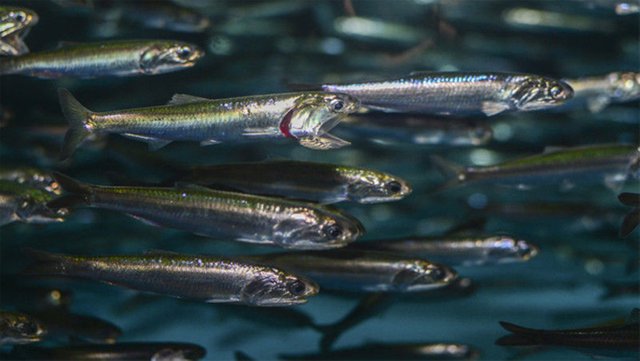Plastic smell Delicious for fish

Plastics, the amount of 8 million tons per year flows into the sea. The fish that incorporated the fragments in the body finally lined up at the table of man... food chain is what anyone does not want. However, according to a new study published recently in " Proceedings of the Royal Society B ", it was suggested that a certain fish was fascinated by the smell and consumed plastics.
That fish is distributed mainly on the west coast of North America and is known as Anchovy. Studies suggest that anchovies respond to smells like prey.
It was last year that survey results on micro plastic pieces in the sea called micro plastic found in the body of anchovies. Following these previous studies, the research team led by Mr. Savoca examined whether this was intentional or accidentally included in the mouth. (Incidentally, in the year 2016, studies on plastics micro beads like plastic foods rather than natural foods, but later it was revealed by Science magazine that the research results differ from the truth. It is confusing ...)
Well, did you know that olfaction plays a very important role for fish? For example, from a shark that sniffs the tiny chemicals that resemble the smell of the prey, to salmon that relies on olfaction for the egg-laying way to the upper stream... the fish uses the olfaction for searching for food, mating, and moving. However, it seems that olfaction is backfired by Anchovy.
The research team of Matthew Savoca of the United States Oceanic and Atmospheric Administration cooperated with the Bay Aquarium in San Francisco for the experiments prepared by preparing a seawater soaked crustaceans "krill" like a shrimp which is favorite of anchovies for several hours , Seawater soaked with pieces of plastic for several hours, and odorless seawater. In both cases the flow is fast and the temperature is low.
Under these circumstances, anchovies swim slowly according to the flow of water, but its behavior seems to change significantly when sniffing the prey. When observing with the automated computer analysis and GoPro what kind of behavior the group of 100 or more anchovies exposed to each sea water take, the following result became clear.

[Left] a group of anchovies swimming in odorless seawater, [Right] a group of anchovies exposed to sea water where the smell of plastic pieces remains.
"When we put the seawater filled with the krill's odor into the tank, the herds of anchovies began to respond as if they were looking for food," Savoca recalls the experiment at The Conversation. "And importantly, when we put sea water with the scent of plastic fragments in the tank, it reacted in almost the same way began to irregularly agglutinate herds, and this reaction is a marine vertebrate. There are deceived by the smell became the first action evidence that indicates the possibility that the ingestion of plastic. "
Will other species of fish ingesting plastics take actions similar to this anchovy, and how much fish these plastics-derived pollutants take.
In light of the fact that anchovies are an important part of the food chain, the influence on other marine organisms and human health conditions is anxious again, but as we continue to use recycling activities ahead of the use of plastic products.
I do not think WE should not neglect what to do.
